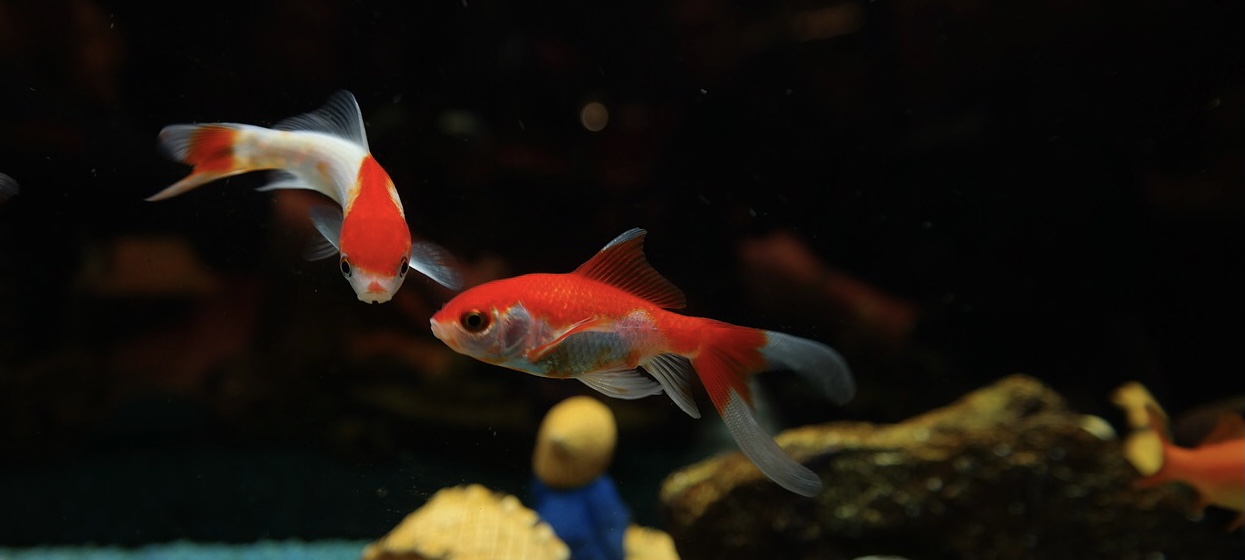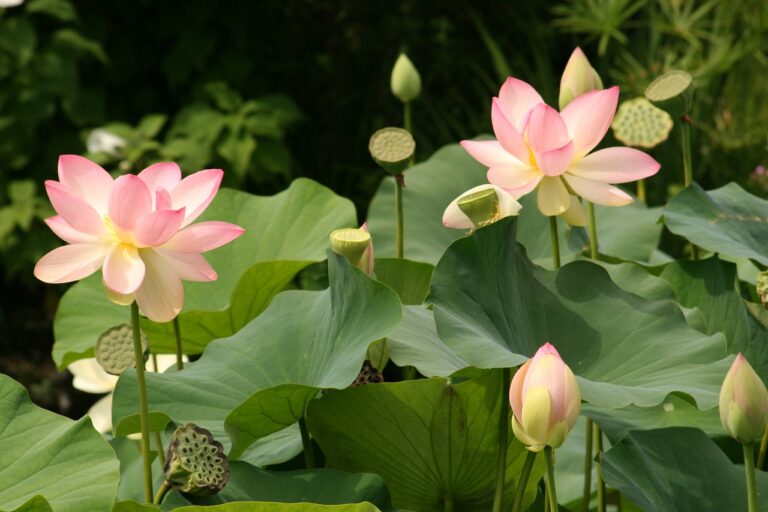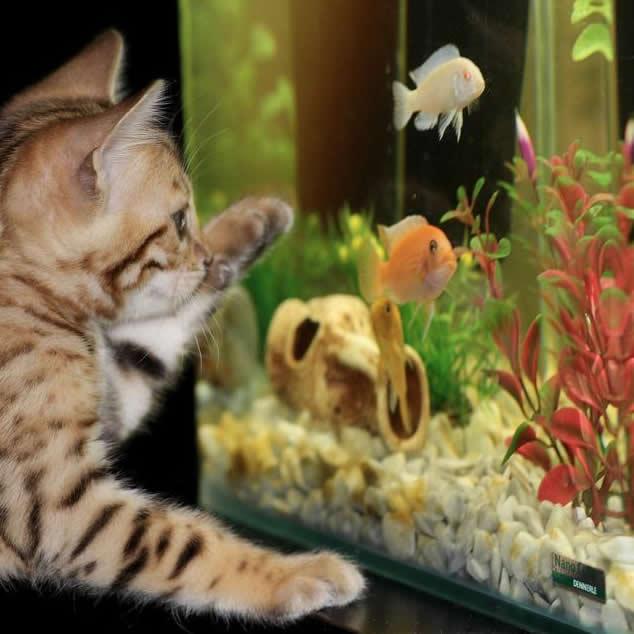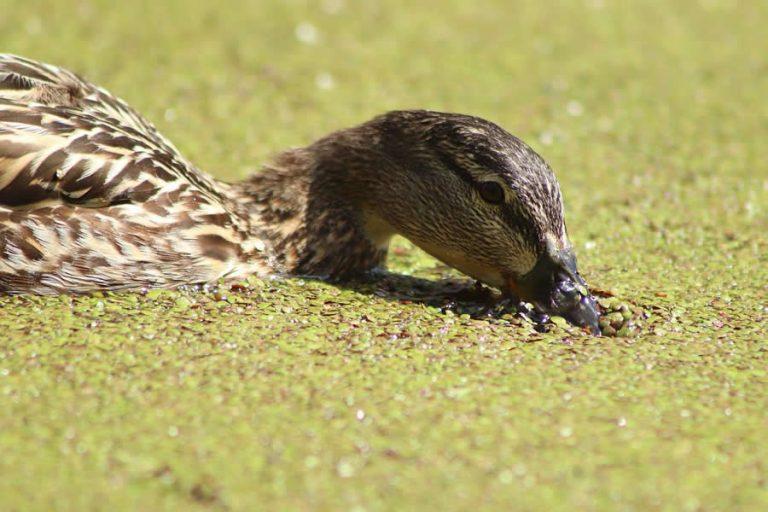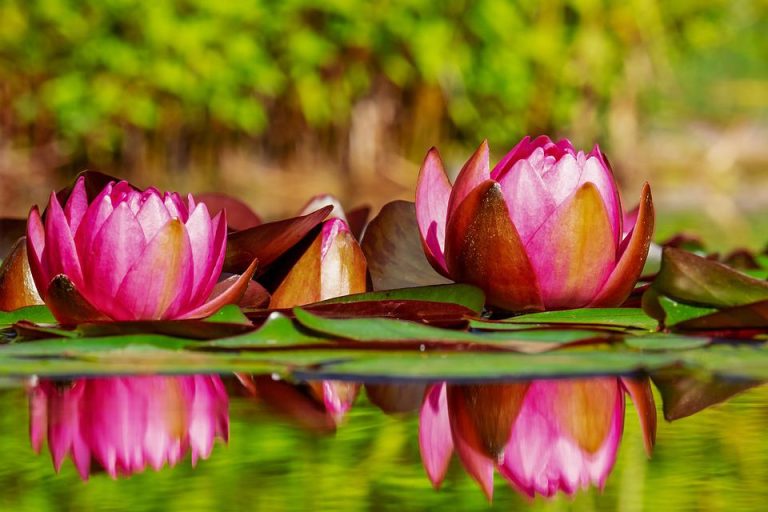Caring for Fish
For well over a century, Tricker’s has been breeding and raising fish at our hatchery here in Independence, Ohio. Over the years we have successfully raised many fish and have kept them healthy.
Prevention has always been far superior than treating any fish disease.
SPRING FISH CARE. In spring, your pond is most susceptible to many fish diseases and is a stressful time for fish because of the change of seasons as it gets warm. Ich (Ichthyophthiriasis, a parasitic protozoan) is one of the most common and deadly of the Spring diseases. If untreated Ich can run rampant and spread throughout the pond and kill many fish. Known also as the “white spot disease”, Ich is easily identified by observing the visible white cysts in the fish skin and gills, similar to salt specks. Marked infections may be accompanied by lethargy, listlessness, rubbing the sides of the pond, and difficulty in obtaining oxygen if the gills are badly infected. Spring induces fish breeding, and this action can be very hard on the females (and males) which results in torn fins and damage to the outer skin by running into items (rocks, filters, etc.) within the pond during the mating rituals. Results of this action must be watched afterward carefully for signs of infection and diseases, not only Ich but other bacterial, fungal or parasitic diseases.
Spring Fish Feeding. Fish can suffer with kindness. Do not over feed your fish. Because fish are cold blooded, start feeding your fish when the water begins to stabilize over 50°F. During this time the recommended use of Spring or Fall Fish Food can be used. Fish better digest those foods at the lower temperature. Feed small young goldfish as much as they can eat in 15 minutes, while a large fish may eat half its own weight in that time. Any uneaten food should be removed since it will contaminate the water. A Fish Feeding Ring keeps the floating food in a central location.
Tricker’s recommends at least 3 products to help keep your fish healthy and safe and prevent common fish diseases.
- Pond Ich Remedy: The main ingredient will control Ichthyophthiriasis or Ich. It’s important to treat the pond in early spring when the weather begins to rise above 50°F or when Ich is seen on a fish.
- Aqua-Prazi. Periodic use of this medication will keep your fish healthy by treating any developing internal infections. It is a safe remedy for fish in treating internal flukes and tapeworms found in the intestines, gills, liver, etc. and is readily absorbed in the blood of the fish.
- Turks Island Sea Salt. Sea salt has proven benefits that have been recognized by fish breeders and raisers over the decades. It’s an osmoregulatory enhancer that makes fish to exude mucus from the gills and skin which can kill or remove parasites, adds natural electrolytes, and reduces fish stress which is common in the spring.
Spring is a critical time to watch your fish closely for any unusual signs of fish diseases. Prevention cannot be over stated.
Summer Fish Care: Continue to routinely use the Turk’s Island Sea Salt. If fish show symptoms of Ich, the Pond Ick Guard should be used. Watch closely for any beginning fish disease. Natural bacteria to keep the water healthy is recommended, i.e. such as “Ultra Clear Clarifier”.
Fall Fish Care: When autumn approaches, the fish should stop being fed when the water temperatures begin to go below 50°F. Special fish food for fall ensures proper digestion by the fish. The use of a biological bacteria that can reduce the Sludge that accumulates during the year is recommended, i.e. Ultra Clear Sludge Digester.
Winter Fish Care: During the winter the cold weather bacteria are essential in your pond. When the temperature drops below 55°F, “Arctic Blend” is recommended. Arctic Blend is a natural bacteria that will keep the water clean during these cold winter months and work on keeping your pond in ecological balance during these stressful months of winter. These bacteria are not like the Ultra Clear bacteria that are used in the spring, summer and fall. In harsh winters when ice covers your pond, a pond deicer is recommended. This mild heater (about 100W) will keep a hole in the ice to allow noxious gases such as methane, to escape that can cause fish kills. Other techniques can be the use of a bubbler or running a water fall. This is important if you have a lot of vegetation that is wintering under the ice in the water garden pond or build up of sludge. The fish do not need to be fed during this time.
Test Water Quality for pH and Ammonia: Testing the water quality is important — pH and ammonia must be monitored with simple tests that can be routinely done. The results can reveal a lot about water quality and the health of your fish. The pH of the water should be neutral, around 7.0 (typically the pH will be higher in late afternoons).
You can raise the pH with bicarbonate of soda of its too acidic. The cause of abnormal pH must be understood and corrected or the abnormal pH will return. Ammonia is from the natural excretion from fish, uneaten fish food, or plant decay.
Ammonia can be deadly to fish, especially in warmer water. High ammonia can destroy the protective mucus membranes and gills of fish and cause internal bleeding. The fish may show signs of gasping for air at the surface of the water but also will be lethargic. This can be mistaken for lack of oxygen in the water, but is caused by the ammonia destruction of red blood cells inability to carry oxygen by the fish.
To rid the ammonia, the use of a product called Ammonia-Ease can be used. In critical situations, performing a water change may become essential. It is important to ensure that any tap water added to the pond is free of chlorine to protect aquatic life. Incorporating plants into the pond is an effective and natural method for absorbing ammonia, which helps maintain clear and safe water for fish and snails.
The cause of the increased ammonia must be understood so as not to repeat itself, i.e. overpopulation of fish, too much fish food, damaged or undersized water filter, etc. Routine testing should be done when putting in a new pond or after water changes to make sure to avoid what some experts call new pond syndrome where it is a concern that ammonia levels can rise unchecked rapidly in the beginning when the water is becoming conditioned.

